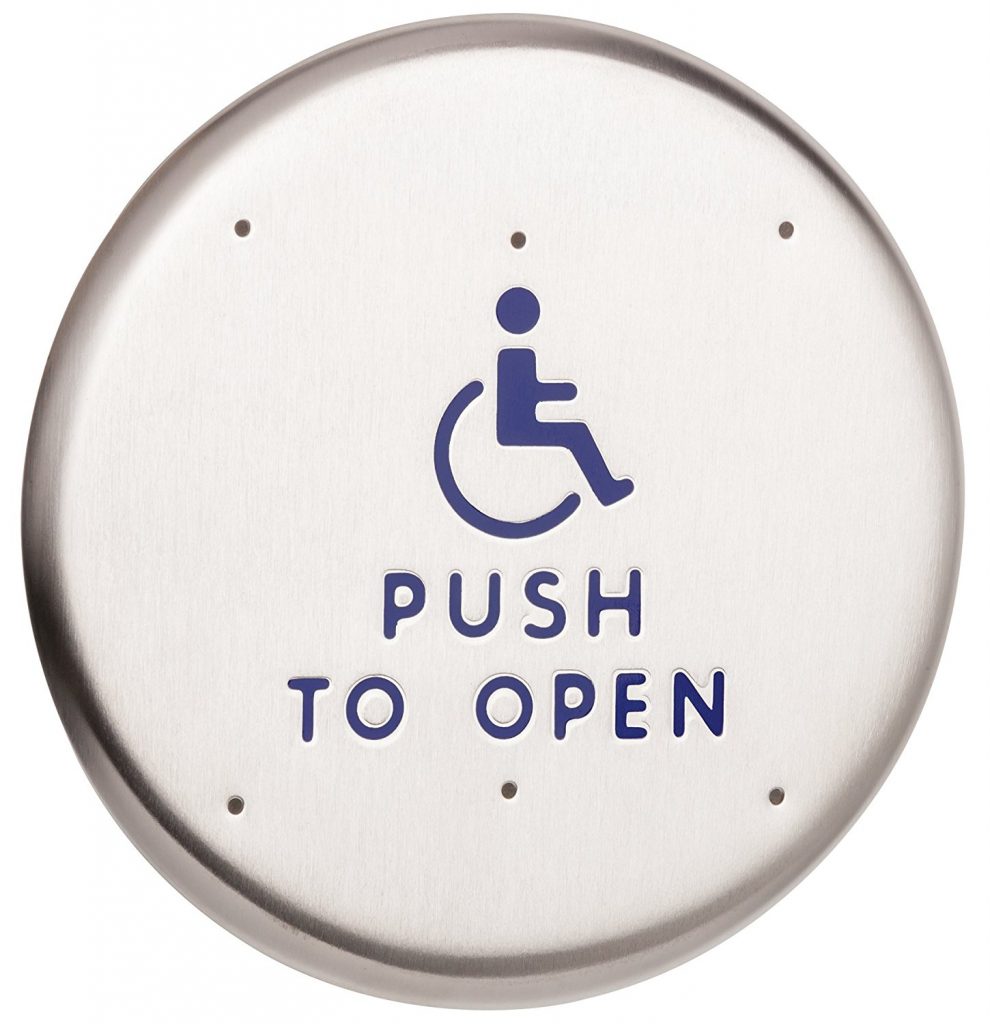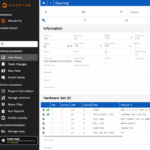Update: There are some code changes coming which could affect the answer to this question. Refer to this article for more info.
~~~
 This question showed up in my inbox yesterday, and it’s not the first time so here goes…
This question showed up in my inbox yesterday, and it’s not the first time so here goes…
Are automatic operators required by the ADA Standards and ICC A117.1 – the predominate accessibility standards used in the US?
These standards do not require automatic operators in order for a door to be considered accessible. There are two sections of these standards which address doors – one for manual doors and one for automatic doors. If a door meets the requirements for a manual door that are listed in the applicable standard, an automatic operator is not required. Of course, an auto operator may be used for convenience even if it is not specifically required, and there may be local codes that are more stringent than the national standards.
The requirements for a manual door include a minimum clear width, maneuvering clearance as defined in the standard, a maximum opening force and closing speed, a flush surface at the bottom of the door on the push side, hardware that operates without tight grasping, pinching, or twisting of the wrist, and several other requirements. If a door is on an accessible route and can not meet the criteria listed in the standards, then adding an automatic operator may bring the door into compliance; automatic doors are not subject to some of the limitations stated for manual doors.
For detailed information about the requirements for manual doors and automatic doors, refer to sections 404.2 and 404.3 of the ADA Standards and/or ICC A117.1 (these standards are very similar). Also check local codes to ensure that there are no additional requirements for automatic doors.
You need to login or register to bookmark/favorite this content.






The US Access Board also has a “Guide to the ADA Standard” that can be a helpful resource :
https://www.access-board.gov/guidelines-and-standards/buildings-and-sites/about-the-ada-standards/guide-to-the-ada-standards
I understand that the codes can’t force the owner to to buy a certain device, however, If the door does not meet the code standards then it should inferred (and in my opinion written) that an automatic opening device is to be used.
In order to de facto meet the force for opening a door in a location where your exterior doors are subject to wind pressures, it becomes practical to have these on your accessible exterior doors.
Hi Rick –
Auto operators can help sometimes, but there is a limit to how much opening force the door with the operator can exert (15 pounds), so in very windy conditions a low-energy operator won’t help much. Going to a full-powered operator will allow more opening force, but other requirements kick in like safety sensors and guide rails.
– Lori
Lori,
Maybe I was thinking about this wrong. Is the mechanical advantage they supply basically that they cancel out the closer force? i.e. without an operator, accessibility code requires opening force to be 15 lb. and whatever the closer is doing fights against that load, but I had assumed operators have adjustable power and are supposed to be stopped by 15 lbs additional applied them, that is, they are installed in a way that the force they will supply will be that which is needed to overcome the closer _plus_ 15 lbs. at the leading edge?
I get that 15 lb at the leading edge doesn’t gain much of an advantage in a strong wind. Thanks.
For interior doors (non-fire-rated), the opening force limit is 5 pounds – even with a closer. For exterior doors and fire doors, the limit may be established by a local code, or if not, the limit is what is set in the building code – typically 15 pounds to release the latch, 30 pounds to set the door in motion, and 15 pounds to open it to the fully-open position. ANSI/BHMA A156.19 limits low-energy operators to these same forces when the door is operated manually. So an operator can help when there’s an opening force problem, but not always.
– Lori
As an installer of hundreds of store fronts, main entry’s, and door controllers, we have never called this an Automatic operator.
This has always been referred to as a “power assisted” door controller. Using a ‘low-energy’ door controller, which needs to manually activated, via a wall switch. Which is also referred to ADA – 404.3.5 Controls. Manually operated controls shall comply with 309.
Either in a single door opening, or a pair where one leaf is required to be powered assisted.
Generally, this is at the main entrance of a building, which is closest to the elevator with-in the building, and most likely the ADA (ramp) entrance.
Most of the buildings that I’ve installed the door controller are schools, goverment, senior housing, medical offices. I have installed door controllers in other “common” areas of a building, as per the owner/architect requirements.
I think the real answer your looking for is here – ADA – Advisory 404.1 General Exception. Security personnel must have sole control of doors
that are eligible for the Exception at 404.1. It would not be acceptable for security personnel
to operate the doors for people with disabilities while allowing others to have independent
access.
Hi Bob –
A power-assist operator is an operator that reduces the required opening force but doesn’t open the door completely on its own. Here are definitions of the two types from A156.19:
2.3 Power Assist Door A door with a power mechanism that activates by pushing or pulling the door, reducing the opening resistance of a self-closing door to allow easier manual opening of the door. If the opening force on the door is released, the door shall come to a stop and either immediately begin to close, or begin to close after a predetermined time.
2.2 Low Energy Power Operated Door A door with a power mechanism that opens the door upon receipt of a knowing act activating signal, does not generate more kinetic energy than specified in this Standard, and is closed by a power mechanism or by other means.
– Lori
Thanks for explaining the ADA requirements. I am opening a business this year. I might want to include some automatic doors for the convenience of my customers.
When there is a push plate, can the delay time be adjusted to allow for the wheelchair user to move out of the way? In my case a door operator has a card reader that opens the door, but the reader is approximately 24 from the door latch side; there is more than 24″ clearance at pull side.
Hi Marco –
I’m sure there is a way to do that electronically, but I have never seen it done. The BHMA standard for low-energy automatic operators includes requirements for the location of the actuators. This includes the requirement that the actuator “shall not be located in a position where the user would be in the path of the moving door.” There’s more info in this article: https://idighardware.com/2013/08/decoded-actuators-for-low-energy-operators/
– Lori
Thanks for explaining the door requirements for accessibility standards. My grandpa owns a retail store and he is considering getting automatic doors for his business. I will be sure to share this info with him so he can get in compliance with the laws and standards.
You’re welcome! I hope you have found everything you need, Greta! 🙂
– Lori